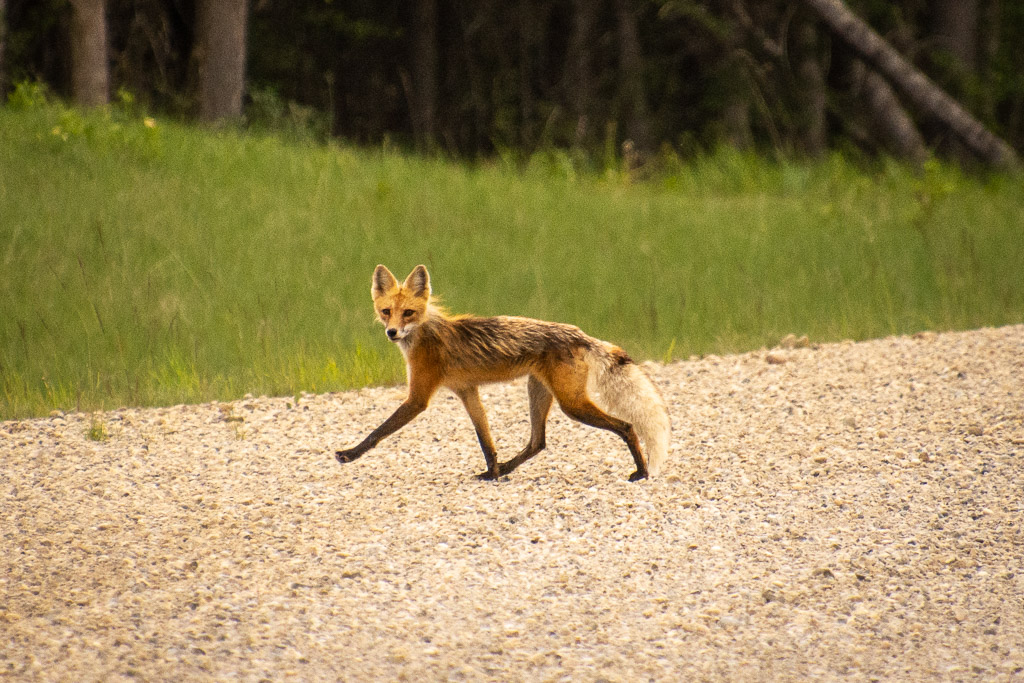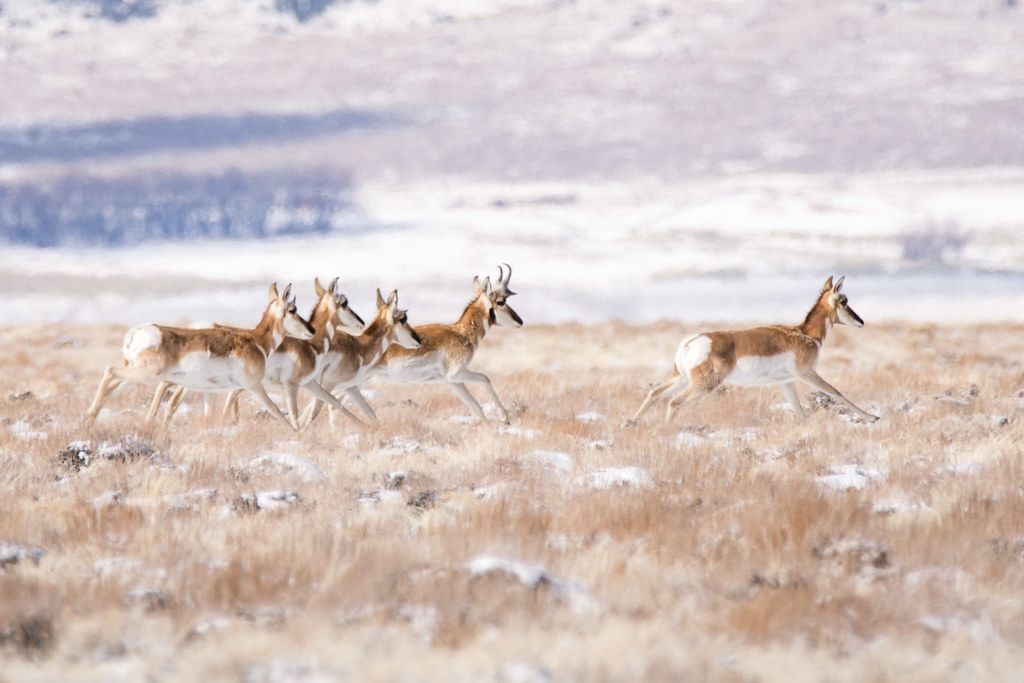Threats to Wildlife from Transportation Networks
Transportation networks create 4 main risks for wildlife:
1. Loss of life
2. Loss of habitat, including habitat degradation and fragmentation
3. Loss of access to critical resources (e.g. nesting sites, water, migratory routes)
4. Loss of population integrity as herds are sub-divided into smaller groups, increasing the risk of local extinction
In addition, roads create a new and dangerous habitat where snakes choose to bask in the sun, predators feed on roadkill, and turtles nest in the gravel roadsides. Roads also increase human access to wildlife habitat, raising the risk of poaching, dumping, and other illegal activities.
Determining Risk and the Need for Wildlife Road Mitigation
There are a number of factors that need to be considered when planning a road or seeking to mitigate roadkill in a specific area. First and foremost, is the road necessary? Extra roads do not reduce traffic congestion. To effectively address climate change, the focus must be on moving away from a reliance on cars. If the road is absolutely essential, it should be carefully planned, keeping in mind the needs of non-human and human animals.
1. What is the conservation value of the surrounding habitat? Is the area of particular natural importance (e.g. patch of remnant prairie, wetlands)?
2. Does the surrounding area shelter threatened or endangered species (e.g. badgers or a sharp-tailed grouse lek)?
3. How many wildlife live in the surrounding area? Is it home to large herds of deer, a significant breeding ground for frogs, or a rest spot for migrating birds?
4. Will the road impact wildlife corridors and habitat connectivity? For example, will the road inhibit animals heading to a river for water? Will it cut across traditional migratory routes?
5. What is the current or potential mortality rate? For existing roads, this can be estimated from roadkill and accident reports. For proposed roads, studies of current wildlife population sizes and movement patterns will provide valuable information.
6. What are the costs entailed in providing or not providing wildlife road mitigation? An underpass or wildlife bridge may appear prohibitively expensive until it is compared to the expenses and human deaths incurred due to wildlife road collisions.
Roads through or in the vicinity of urban areas involve high traffic volumes and require special consideration even if they do not appear to be ecologically important areas. A study of highway mortalities in southern Alberta showed that road sections close to urban centres were at greatest risk of animal vehicle collisions due to “high traffic volume and abundant deer populations.”
The risk of collisions can vary significantly for different species. One British study of roadkill along an urban-rural spectrum speculated that “the variation in road kill risk might be attributed to animals developing avoidance behaviours.” However, in urban settings, these adaptations may be offset by “other behavioural changes that are common in urban populations, for example, increased boldness and habituation, including longer response times to threats, such as oncoming vehicles, which could increase roadkill risk.”
The British study also looked at the significance of urban green spaces but found it difficult to determine their impact. On the one hand, parks may increase the urban wildlife population and encourage species that wouldn’t normally be found in an urban setting. On the other hand, they may provide urban wildlife which have limited home ranges with a low-risk habitat where they can move around without needing to navigate roads.
Minimizing the Risk of Collisions
The Wildlife Roadsharing Resource Centre provides an overview of steps that can be taken to avoid animal-vehicle collisions and assesses their effectiveness.
1. Physically separate animals from the roadway
Wildlife crossings, combined with exclusion fencing, are the most effective means of reducing wildlife collisions. Fencing in isolation is a barrier to wildlife movement and, unless the fencing is extensive, can lead to clusters of collisions at either end of the fencing.
2. Influence Driver Behaviour
Public education can be useful to remind drivers of peak collision times and the optimal way to respond to a potential collision, but it must be accurate and evidence-based.
Setting lower speed limits has not proven to be effective, but road designs that encourage a reduction in speed appear to work, although there are mixed results depending on the type of traffic calming measures used.
It’s not yet clear whether different animals are attracted to or withdraw from roadway lighting.
3. Reduce wildlife population size
To be effective, more than 50% of a population needs to be culled. The public looks more favourably on relocation, but there is a low survival rate for animals that have been relocated and, if not relocated far enough away, the animals will return to their original home. Sterilization is not always effective and can be expensive. It is not permitted along Canadian highways.
4. Influence animal behaviour
None of these methods appeared to be effective.
Studies of existing roadway mitigation initiatives provide helpful advice for future projects.
1.Build roads near the edges of habitat as opposed to directly through them to reduce fragmentation and the need for crossings
2. Modify infrastructure and roadside borders to avoid trapping animals or hindering movement
3. Map light-sensitive areas (e.g. wetlands with breeding amphibians) to inform the installation (or non-installation) of lighting
4.Install noise barriers to minimize disturbance of neighbouring natural areas
5. Improve the surface of underpasses and shorten the length of culverts to make it easier for animals to use them
6. Plan ahead for the long-term maintenance of fencing and eco-passages and ensure that they will not interfere with snow clearing and other road maintenance activities
7. Consult experts with prior experience
Importance of Wildlife Advocates
Public education plays an important role in mitigating wildlife fatalities. Miistakis Institute held workshops with members of the public about wildlife-vehicle collisions and found that participants emphasized human safety over wildlife connectivity. “However, roads may have a significant impact on wildlife via direct mortality or avoidance behavior by species sensitive to road disturbance. Thus, ensuring safe passage of wildlife across roads is an important strategy for maintaining biodiversity and protecting species at risk. Public education and science-policy translation regarding the need for investments in mitigation in support of biodiversity and species-at-risk recovery planning is urgently needed.”
Collaboration and information sharing across specialties can prove valuable. “Improving the way wildlife/road interactions are managed in Ontario has been championed by the Ontario Road Ecology Group (OREG), a not-for-profit organization that protects biodiversity from the threats of roads by facilitating partnerships among government and non-government agencies dedicated to resolving road ecology issues through research, policy, and stewardship.”
If you are concerned about road construction in Saskatoon, be sure to join forces with the Northeast Swale Watchers.
EcoFriendly Sask supports Saskatchewan environmental initiatives through an online publication, an events calendar, small grants, and the Nature Companion website/app. You can follow EcoFriendly Sask by liking us on Facebook, following us on Twitter, or subscribing by email (top right corner).



